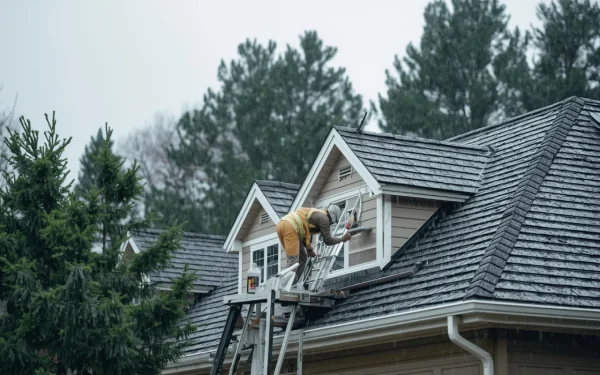Smart Upgrades for Home Air Conditioning Systems

Key Takeaways
- Smart thermostats learn your household’s preferences and automatically adjust temperatures, leading to measurable energy savings and a tailored indoor climate.
- Inverter-driven systems provide steady and consistent cooling or heating while minimizing energy usage and lowering monthly bills.
- Zoning systems enable room-by-room temperature control, providing everyone in your home with a more personalized and efficient cooling experience.
- Regular maintenance, enabled by smart diagnostics, ensures your system stays efficient, avoids breakdowns, and lasts for many years.
- Incorporating renewable energy sources, such as solar power, enables your AC system to operate sustainably and supports broader efforts to reduce carbon footprints.
Overview
Home air conditioning has entered an era that extends far beyond simply setting a preferred temperature on the thermostat. Modern advancements in smart technology have transformed these systems, giving homeowners more control, deeper insights, and enhanced comfort than ever before. Today’s smart upgrades enable you to cultivate a living space that is not only more comfortable but also healthier and significantly more energy efficient. These innovations can optimize how your household consumes energy, adapt to your lifestyle, and promote better indoor air quality—all accomplished with thoughtfully chosen improvements. To ensure you maximize the benefits and achieve the highest standard of workmanship, it’s critical to partner with seasoned air conditioning contractors who bring professional expertise to every step of your upgrade. Professional assistance helps tailor solutions to your specific home, ensuring optimal installation and system integration.
Taking your home’s comfort, efficiency, and sustainability to the next level is easier than ever with today’s smart air conditioning upgrades. These improvements do much more than simply add convenience; they empower you to save energy, lower your operational costs, extend the life of your HVAC system, and help reduce your household’s environmental impact. With energy prices on the rise and a growing focus on eco-friendly living, investing in smart AC solutions has become a practical and forward-thinking choice. Whether you’re interested in intuitive automation, precision climate control, improved diagnostics, or renewable energy integration, these upgrades can transform your daily experience and deliver both immediate and long-term rewards.
Smart Thermostats: Personalized Comfort and Efficiency
Leading the charge in smart home cooling upgrades is the advent of the smart thermostat. These advanced devices go beyond simple programming—they proactively learn your household routine and adjust settings to maximize comfort while minimizing energy consumption. Smart thermostats utilize sophisticated machine learning algorithms that remember your schedule and respond not only to your presence but also to real-time changes in weather conditions and occupancy. Features like geofencing can sense when you are approaching home and automatically set the temperature to your optimal level, ensuring you always walk into a perfectly cooled or heated space. Customizable schedules and adaptive control result in fewer temperature swings, reduced strain on your HVAC system, and lower utility bills. Over time, homeowners can review highly granular energy usage reports, identifying trends and making targeted changes for even greater efficiency.
Remote Access and Integration
One of the greatest advantages of smart thermostats is their robust connectivity. With intuitive smartphone apps, you can adjust your home climate remotely—be it from the office, while on vacation, or simply from the comfort of your couch. This means whether your plans change or you forget to set the thermostat before leaving, you maintain control wherever you are. Several models also offer integration with popular voice assistants such as Amazon Alexa, Google Assistant, and Apple HomeKit, allowing you to use voice commands to fine-tune your settings hands-free. This seamless integration makes managing your comfort effortless, ensuring your HVAC system responds dynamically to your family’s lifestyle and providing both peace of mind and daily convenience. If your air conditioning system needs repair, some smart thermostats can help you diagnose issues early, potentially saving you time and money on repairs.
Inverter-Driven Systems: Consistent Cooling with Less Energy
Making the shift to an inverter-driven air conditioning system can revolutionize both your comfort and your utility bills. While conventional systems rely on abrupt, energy-intensive on/off cycles, inverter-driven units continuously adjust the speed of their compressor in response to your home’s real-time cooling (or heating) needs. By modulating output with precision, these systems deliver smooth and steady comfort, minimizing temperature fluctuations and maximizing efficiency. The air stays consistently cool during oppressive summer heat or comfortably warm during winter chills, all while your AC equipment experiences much less wear and tear compared to older technologies.
Inverter-driven technology is built to thrive during periods of extreme weather, maintaining your set conditions without the large energy spikes that can strain both your budget and the local energy grid. As your system only works as hard as necessary, you not only trim energy demand but also suppress the need for frequent repairs or premature replacement. This investment pays off in longevity and increased cost-effectiveness.
Zoning Systems: Customized Climate Control
Traditional central AC systems are designed for simplicity—they cool the entire house evenly, regardless of how rooms are used. Zoning systems transform this approach by dividing your space into independently controlled “zones.” Through a combination of smart thermostats, strategically placed sensors, and motorized dampers in the ductwork, each zone can be managed separately. This allows you to deliver targeted cooling and avoid spreading conditioned air to areas that are empty or rarely used, all without sacrificing overall household comfort.
By channeling airflow only where needed, zoning systems help eliminate energy waste—think of cooling busy family rooms during the day and sleeping spaces at night, while letting little-used guest rooms remain neutral. Additionally, each family member can set their own preferred temperature in their zone, which boosts comfort and minimizes family disagreements over “the right temperature.” With less strain on your air conditioning components and reduced run times, your equipment can last significantly longer and require fewer repairs. Zoning is an eco-friendly and practical way to reduce both HVAC maintenance and system replacements, ultimately aligning with your budget and waste-reduction goals.
Regular Maintenance: Sustaining Efficiency
Regardless of how advanced your air conditioning system is, it requires regular maintenance for optimal operation. Modern AC units now come equipped with smart diagnostic features that monitor system performance and alert you to potential issues before they escalate into major problems. These smart sensors can detect when parts wear out, performance drops, or maintenance tasks are due, prompting quick and efficient scheduling of professional care. Regular biannual visits from a certified air conditioning repair shop are highly recommended to handle vital tasks, such as cleaning debris from coils, ensuring optimal refrigerant levels, lubricating moving parts, and recalibrating thermostat settings.
Staying ahead of maintenance helps address minor issues—such as replacing air filters or worn electrical components—before they escalate into costly repairs or surprise breakdowns, all while maximizing your system’s life and energy efficiency. Such attention to detail pays off with consistent comfort, fewer emergency calls, and stronger returns on your initial investment, not to mention a smaller carbon footprint due to lower energy usage and less equipment waste over time.
Renewable Energy Integration: Sustainable Cooling Solutions
Achieving the highest level of air conditioning efficiency involves integrating renewable energy sources. By connecting your cooling system to solar panels, you can power climate control with clean, renewable energy, significantly reducing your reliance on conventional, carbon-intensive grid power. With solar-powered AC, homeowners enjoy virtually free cooling once their panels are set up, considerably lowering utility costs and supporting the transition to green living.
The most advanced AC systems incorporate smart home energy management platforms, which can automate energy usage patterns to maximize your consumption of on-site solar energy. Some platforms prioritize running the air conditioner when the sun is strongest or delay cooling to late afternoon if sufficient battery storage is available. Any extra solar energy generated can be diverted to home batteries or fed back into the grid, further increasing your energy independence and return on investment. For those seeking both comfort and environmental stewardship, renewable integration offers a compelling, future-ready solution.
Adopting these smart air conditioning upgrades—whether it’s selecting a smart thermostat, upgrading to inverter-driven technology, utilizing zoning, or integrating renewable energy—delivers a multifaceted return on investment. You’ll enjoy a more comfortable, responsive indoor climate, lower ongoing costs, fewer system breakdowns, and lasting environmental benefits. By collaborating with expert professionals and keeping up with regular maintenance, you’ll reap the rewards of efficient, future-forward technology and contribute to a healthier planet—all while keeping your home at the perfect temperature, year-round.






